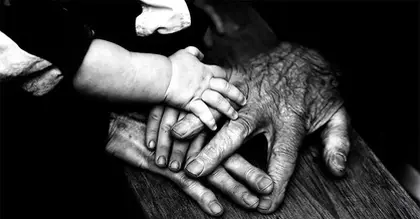
- Researchers found significant disparities in melanoma among racial and ethnic groups.
- Using the National Cancer Database, researchers found the survival rate for melanoma cases was lowest among Black men, who had an increased mortality risk of 26% compared to white men.
- To protect yourself from melanoma, wear sun-protective clothing and sunscreen and check your skin once a month.
While there are numerous studies on male and female cases of melanoma, there is limited research on racial differences of this skin cancer, especially among males.
To learn more, a team of researchers reviewed the National Cancer Database. They examined cases of primary cutaneous invasive melanoma among non-Hispanic white, non-Hispanic Black, non-Hispanic Asian, non-Hispanic American Indian/Alaska Native, and Hispanic males.
Their findings demonstrated disparities in melanoma among racial and ethnic groups.
For American Indian/Alaskan Native, and white individuals, the trunk was the most common area for melanoma. However, Black, Asian, and Hispanic males were diagnosed with melanoma in the lower extremity.
Stage 3 or 4 melanoma was also most common among Black people (48.6%).
The 5-year overall melanoma survival rates were highest for white males (75.1%) and lowest for Black males (51.7%). Researchers discovered that Black people diagnosed with melanoma were 26% more likely to die than white people with the same diagnosis.
“We hope that this study lays the foundation for future research to explore the reasons for why there are different presentations and survival among men of diverse racial groups in melanoma,” Dr. Bianka Bubic, study author and a dermatology research fellow at The Ohio State University Wexner Medical Center, told Medical News Today.
Researchers are still investigating why Black individuals face a higher risk of melanoma severity.
Early signs of melanoma include pigmented lesions that may present with shape, symmetry, size, and pattern changes.
Dr. Faranak Kamangar, a board certified dermatologist with Psoriasis Telehealth based in Palo Alto, CA, told MNT that early detection of skin changes may be more difficult in the Black population, further delaying diagnosis.
She noted the findings highlight the importance of early cancer detection among different racial and ethnic groups.
Dr. Kamanger noted that socioeconomic factors such as lack of access to affordable insurance and healthcare may disproportionately affect melanoma severity among Black communities, which could lead to late-stage diagnosis.
“We have been aware of the main trend for some time — that Black men are diagnosed with melanoma at later stages, making it less likely to be treated and possibly resulting in higher rates of morbidity and mortality for this group. [The research] also supports previously known data that Black men are at higher risk for acral lentiginous melanoma, a subtype of melanoma usually diagnosed at a more advanced stage, as it may be in areas of the body that are harder to evaluate. One famous example is Bob Marley. Unfortunately, he was diagnosed very late and died of melanoma.”
— Dr. Faranak Kamangar, board certified dermatologist
As the most common melanoma subtype among Black individuals, acral lentiginous melanoma is also more difficult to recognize and diagnose early.
“Acral lentiginous melanoma … typically appears on less noticeable or examined areas like the palms, soles, or under the nails,” explained Dr. Wael Harb, hematologist and medical oncologist at MemorialCare Cancer Institute at Orange Coast Medical Center in Fountain Valley, CA.
Genetics may also play a role in melanoma disparities among racial and ethnic groups.
“Due to genetic predispositions, acral lentiginous melanoma has higher rates in this population and, in general, is diagnosed at a later stage,” Dr. Kamanger said.
“We now have identified genes that predispose to acral lentiginous melanoma, and this is the main reason that certain populations are at a higher risk. Involvement of the bottom of the feet and nails can delay diagnosis. Melanoma in general is usually pigmented, brown in color, except for the amelanotic subtype,” Dr. Kamanger added.
Dr. Harb pointed out that acral lentiginous melanoma often presents in less sun-exposed areas. This may explain why areas of the body like the soles, palms, and underneath the nails, are more susceptible.
“This type of melanoma often develops in areas with less melanin, which provides natural protection against UV damage,” Dr. Harb said.
In contrast, Dr. Harb added that white individuals are more likely to develop superficial spreading melanoma, which often manifests on sun-exposed skin as a new or changing mole or discolored patch.
The differences in how melanoma presents in Black individuals compared to white individuals highlight the importance of comprehensive skin examinations that include all areas of the body, not just those frequently exposed to the sun.
Most research studies to date examine melanoma cases in the white population.
Therefore, the small sample size of Black men limits the conclusions that can be reached, Dr. Kamanger explained.
“The main disadvantage of this study is that Black men are less than 0.5% represented. This is a very low number to reach meaningful sub-data,” Dr. Kamanger noted.
“While the study provides valuable insights, it does have certain limitations. It does not account for disease-specific survival, limiting our ability to differentiate melanoma mortality from mortality due to other causes,” Dr. Harb said.
Also, there were some missing data, which could affect the accuracy and completeness of the results.
Additionally, the number of melanoma cases among racial minority groups was considerably lower than among white individuals.
Dr. Harb added that this could introduce potential bias, as the sample may not represent the broader population.
Sun protection is an important first step for protecting yourself from skin cancer.
“Ultraviolet light is classified as a true carcinogen, and there is no safe amount of ultraviolet light exposure,” Dr. Kamanger stated.
“Sun protection with SPF 30 and above, UPF clothing, and seeking shade should be followed.”
Dr. Kamanger recommended checking all areas of your body once a month, including your feet and nails.
“When in doubt, visit a board certified dermatologist annually for a skin malignancy screening,” Dr. Kamanger said.
Dr. Bubic noted that “any lesions that may be changing, increasing in size, bleeding, or not healing appropriately should be evaluated.”





